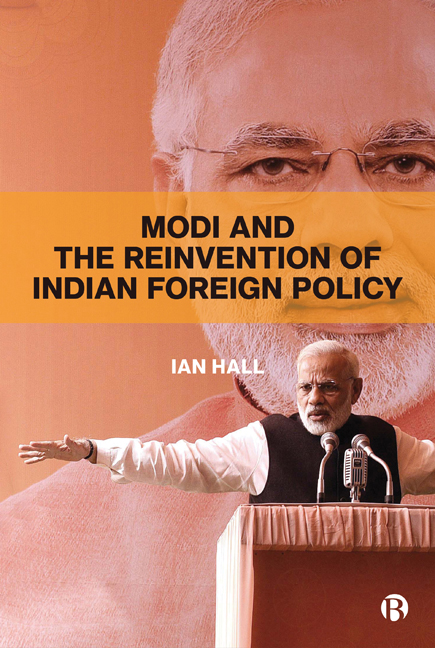Book contents
- Frontmatter
- Contents
- Abbreviations
- Glossary
- Notes on the Author
- Acknowledgements
- Preface
- 1 Introduction
- 2 Nonalignment to Multialignment
- 3 Hindu Nationalism and Foreign Policy
- 4 Modi and Moditva
- 5 World Guru India
- 6 Prosperity and Connectivity
- 7 National Power and Regional Security
- 8 Conclusion
- Notes
- References
- Index
2 - Nonalignment to Multialignment
Published online by Cambridge University Press: 10 March 2021
- Frontmatter
- Contents
- Abbreviations
- Glossary
- Notes on the Author
- Acknowledgements
- Preface
- 1 Introduction
- 2 Nonalignment to Multialignment
- 3 Hindu Nationalism and Foreign Policy
- 4 Modi and Moditva
- 5 World Guru India
- 6 Prosperity and Connectivity
- 7 National Power and Regional Security
- 8 Conclusion
- Notes
- References
- Index
Summary
Modi and his allies believed a reinvention of foreign policy was needed after 2014 not simply because they thought that India's international relations had been mismanaged by the previous government. They were also convinced that foreign policy had been conducted poorly – and according to the wrong principles – for most of independent India's history. For them, as veteran politician Murli Manohar Joshi put it in the preface to the Bharatiya Janata Party's (BJP) 2014 election manifesto, India's leaders have failed abroad, as they have at home, because they followed ‘western models’. Instead, they should have set themselves the task of ‘creating a socio-economic and political paradigm of governance drawn from the civilizational consciousness of India’ (BJP, 2014a, p. 2). What was needed, to use Ram Madhav's words, was a new foreign policy rooted in India's ‘age-old cherished cultural and civilizational values’ (BJP, 2015).
Understanding why Modi's government pursued their reinvention thus demands some exploration of how its predecessors conducted India's international relations and the beliefs and logics that drove their foreign policies. To that end, this chapter sketches the approaches employed since independence, beginning, of course, with Nehru and nonalignment. The first half outlines Nehru's approach and his direction of foreign policy, as well as its unravelling in the early 1960s, under pressure from the Mao Zedong's China, from Pakistan, and the circumstances of the Cold War. The middle sections look at how India's governments managed the country's international relations in the latter half of the Cold War and into the 1990s, as the country's economy faltered and its principal backer among the major powers, the Soviet Union, disintegrated and disappeared. The third part turns to the contemporary period, in which India began to embrace a more pragmatic approach – or at least shed some of its inherited ideological baggage – and its position in the world began to improve, largely because of renewed economic growth and changed geopolitical circumstances. The conclusion lays out points of continuity and change in Modi's foreign policy, prefiguring longer discussions of the key elements of his approach in the rest of the book.
- Type
- Chapter
- Information
- Modi and the Reinvention of Indian Foreign Policy , pp. 21 - 40Publisher: Bristol University PressPrint publication year: 2019



